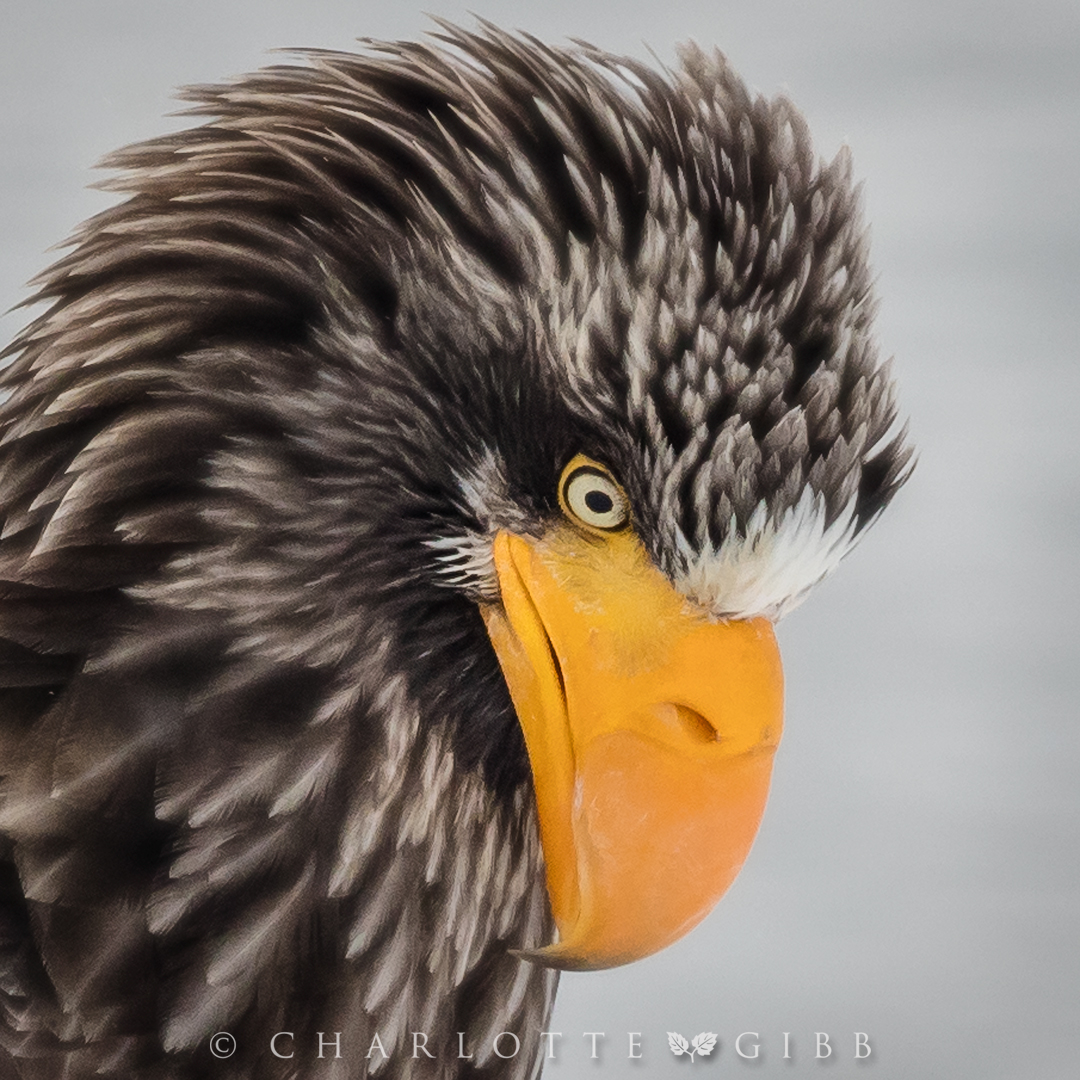
Japan: Part Four — Eagles
Every winter some very special guests from Russia visit the island of Hokkaido, Japan — magnificent sea eagles. These gigantic birds migrate south from Siberia to spend their winters in a relatively warmer climate along the shores of the northeastern region of the island. While the Sea of Okhotsk becomes packed with sea ice, the Sea of Japan and the Pacific are usually ice-free. It is along these coastal ranges that the eagles concentrate.
There are two species of sea eagle that share the winter territory — the Stellar’s Sea Eagle and the White-tailed Sea Eagle. Both species are very, very large, with talons about the size of your fist. They are scavengers, feeding on just about anything dead or dying that they can find, but mostly they eat fish. They feed on spawning fish in shallow rivers, but they also commonly pursue fishing boats at sea to pick up whatever fish scraps slip through the nets. Tour operators in Hokkaido’s port cities take advantage of this behavior, and for a price they will bring visitors out on their boats, tossing frozen fish into the sea from the vessel’s bow to draw the Eagles closer for the tourists.
Although Hokkaido shares the same latitude as Oregon, its climate is much different. Fierce, severely cold winds sweep down from the Arctic, plunging temperatures down to sub-zero degrees. During my time there in February, staying warm was a challenge as temperatures routinely dropped to around -20° F in the early morning hours. One of these mornings, in particular, I was out on a tour boat with my small group of photographers when a severe storm began to brew. We were well beyond the harbor when the temperature dropped dramatically, the light snow turned heavier, and the wind began to howl. We were photographing the eagles in these conditions, and the captain was expertly positioning the boat so that we would have the best view of the eagles swooping down for their meal. The scene was so captivating that I had nearly forgotten just how cold I had become. My fingers were numb and my feet practically frozen to the deck of the boat. The Eagles didn’t seem to care about the extreme weather but continued to gorge themselves.
We stayed out on the water for as long as we safely could, but it had become clear that the storm was turning into a blizzard. While motoring back to the harbor, the visibility had dropped significantly. The short walk from the dock to the bus was treacherous in the wind. By the time we got back to our hotel, you could not see the road anymore. I honestly don’t know how our driver managed to navigate in those conditions, but he was a hero for getting us back safely. When we arrived, the door to the hotel, a short 20 feet away from the bus, was barely visible. I spent the remainder of that day inside, sipping tea and watching the storm from the comfort and safety of my room. The next day, we went out again on the boat at dawn. The storm had cleared, and a beautiful, pink dawn greeted us.
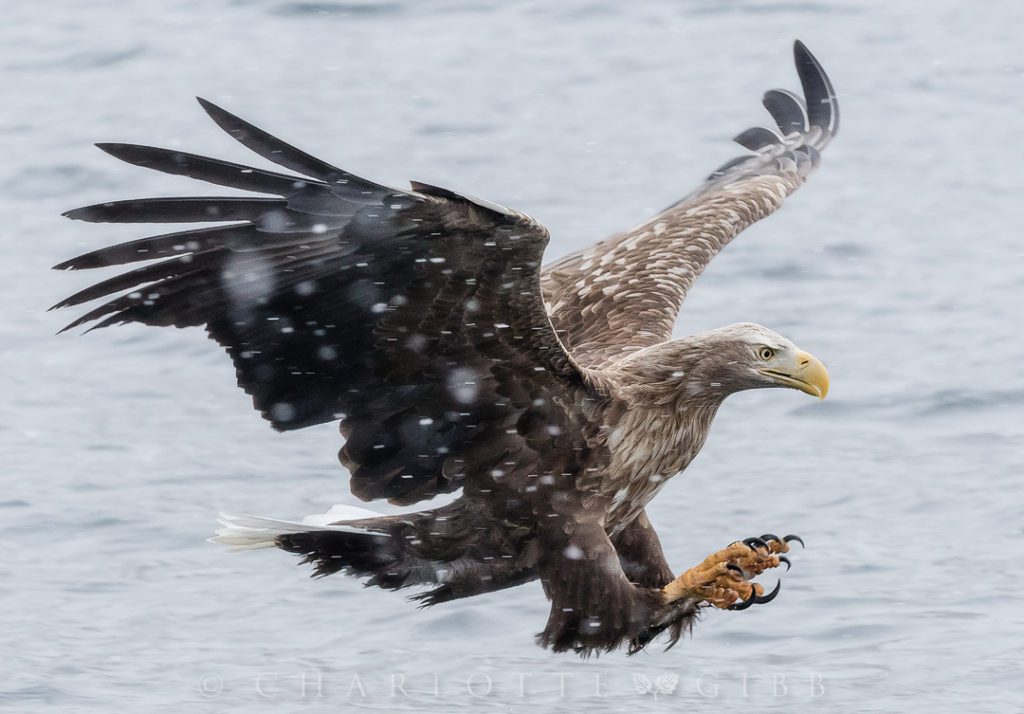
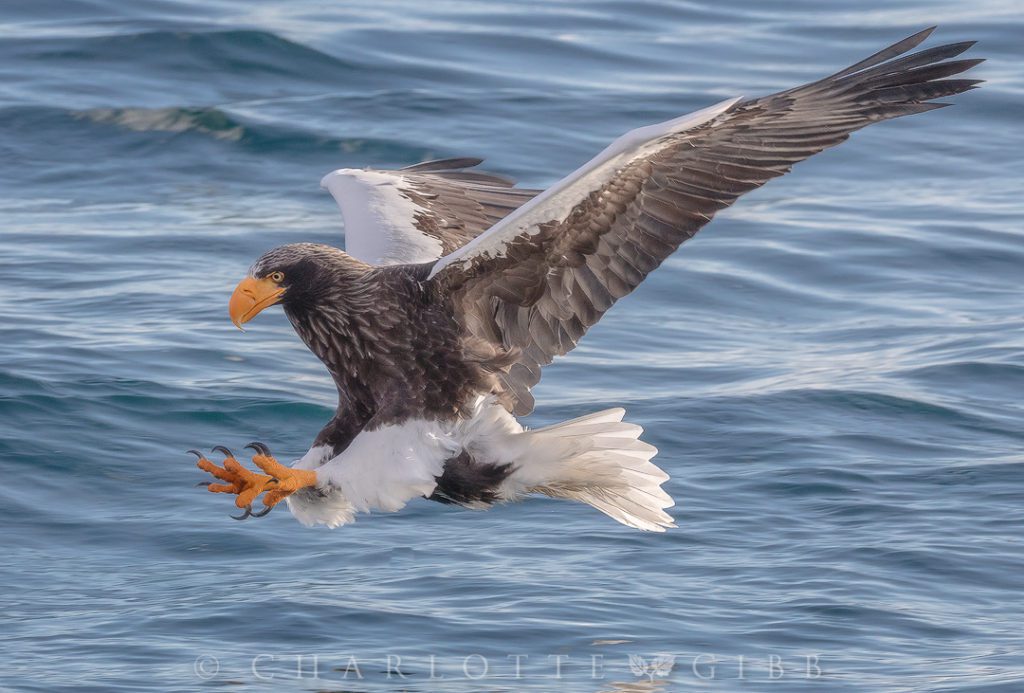
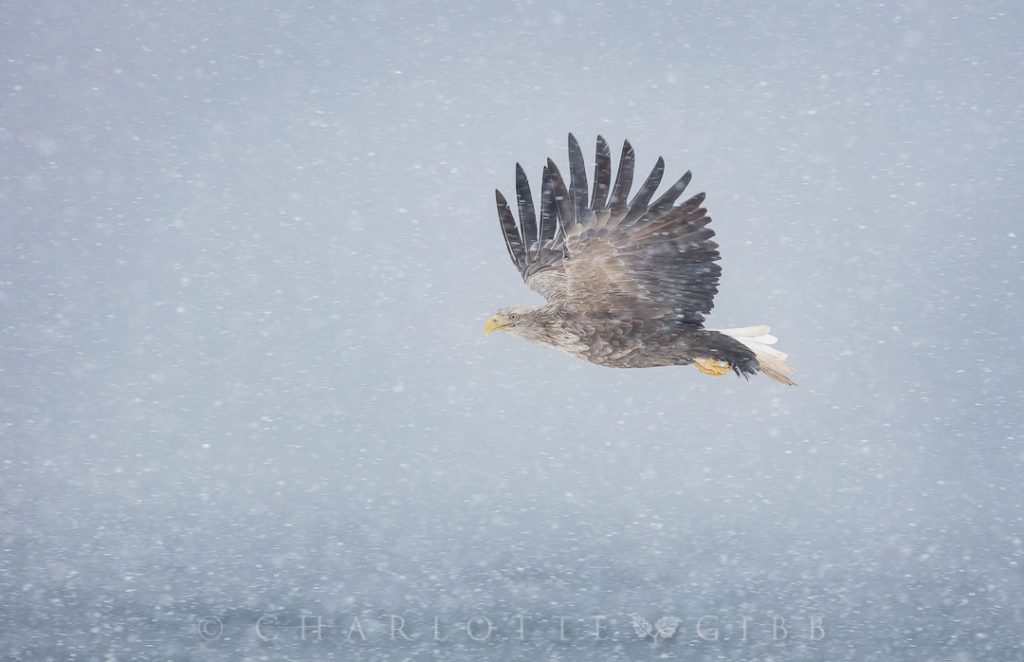


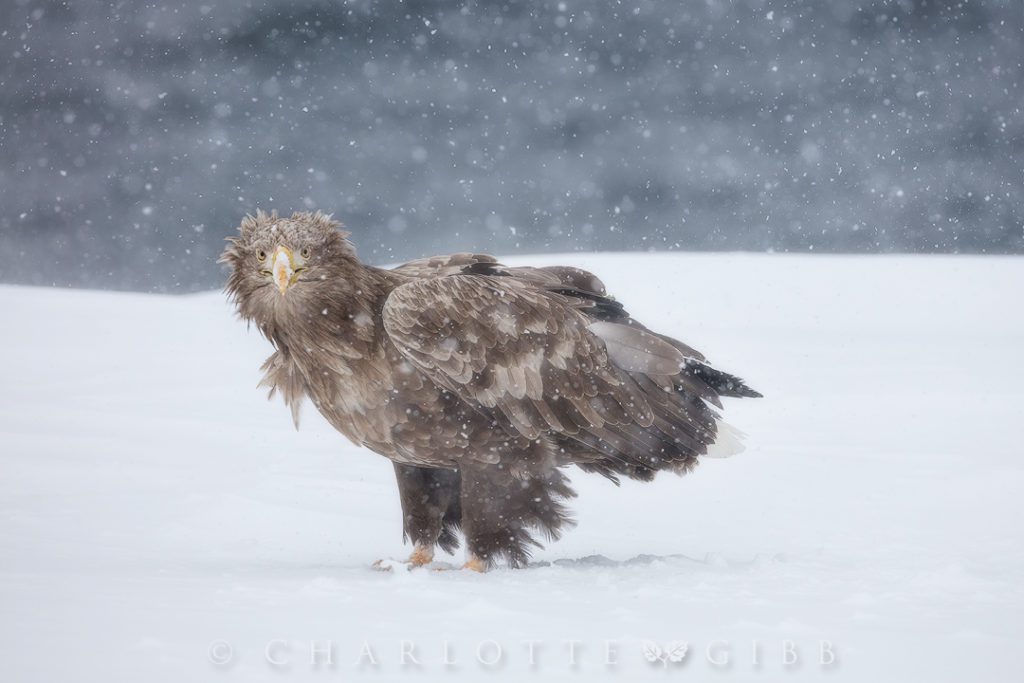
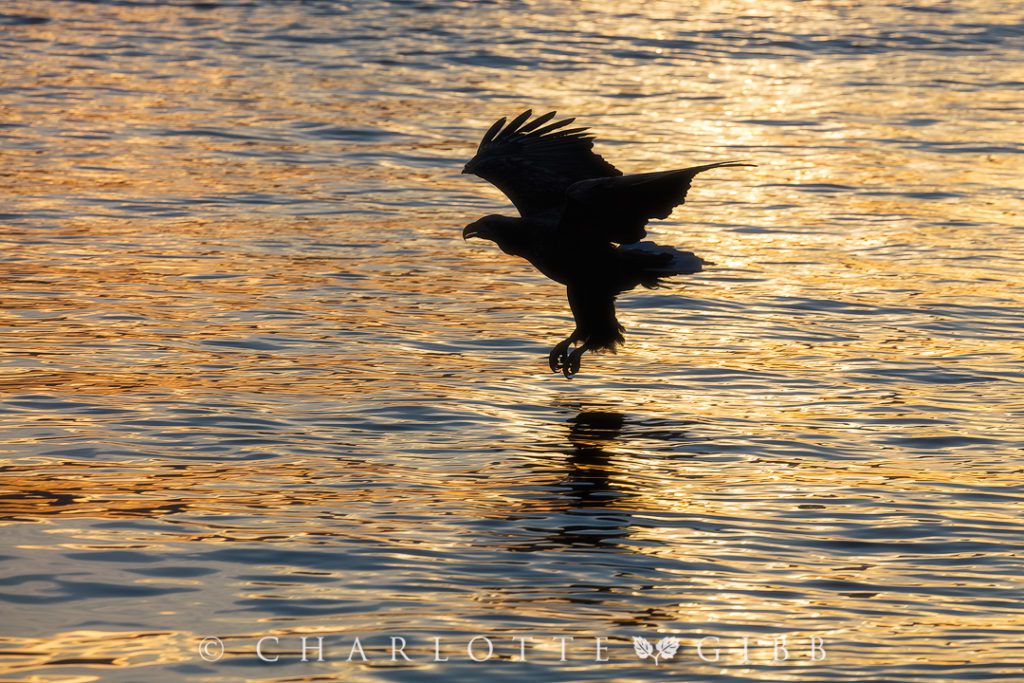
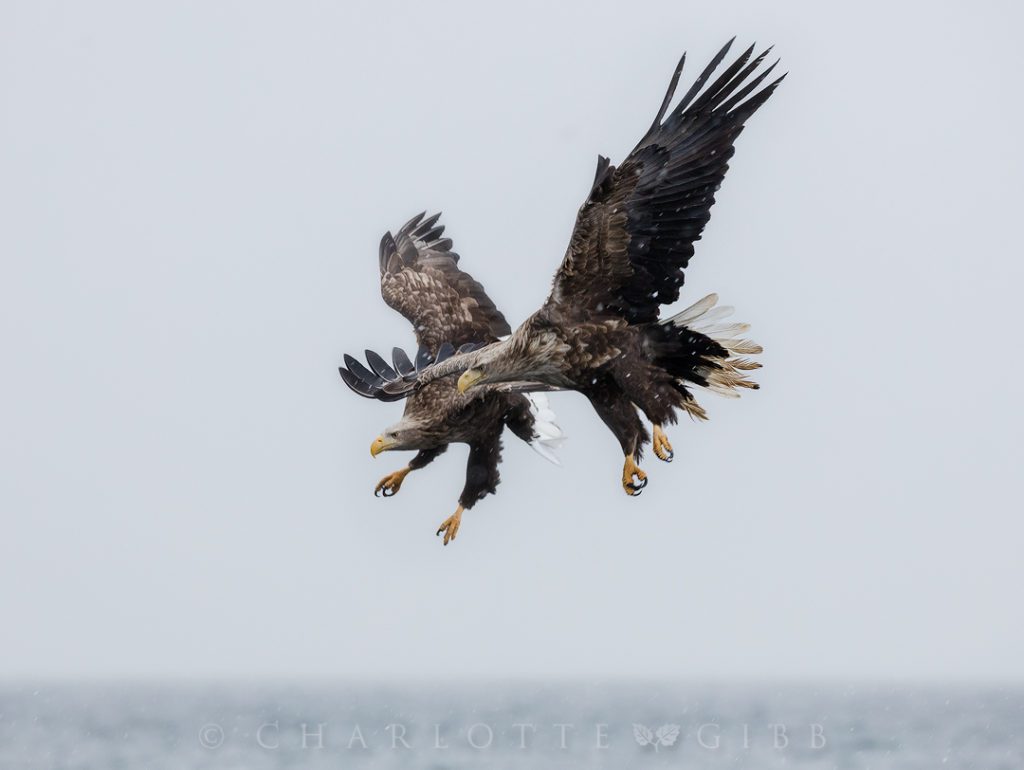
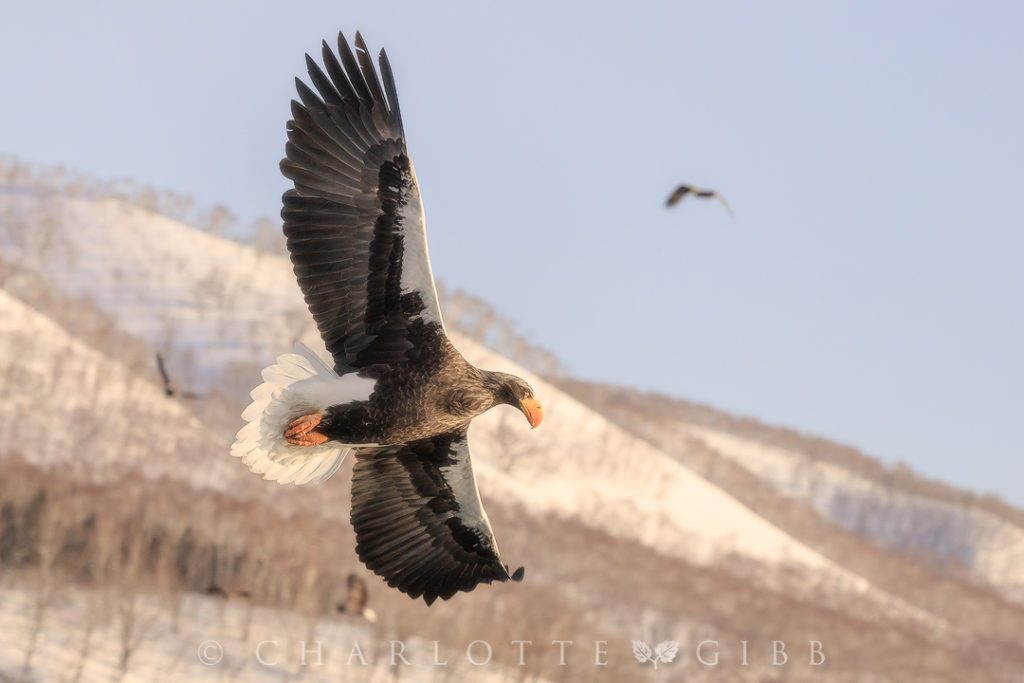
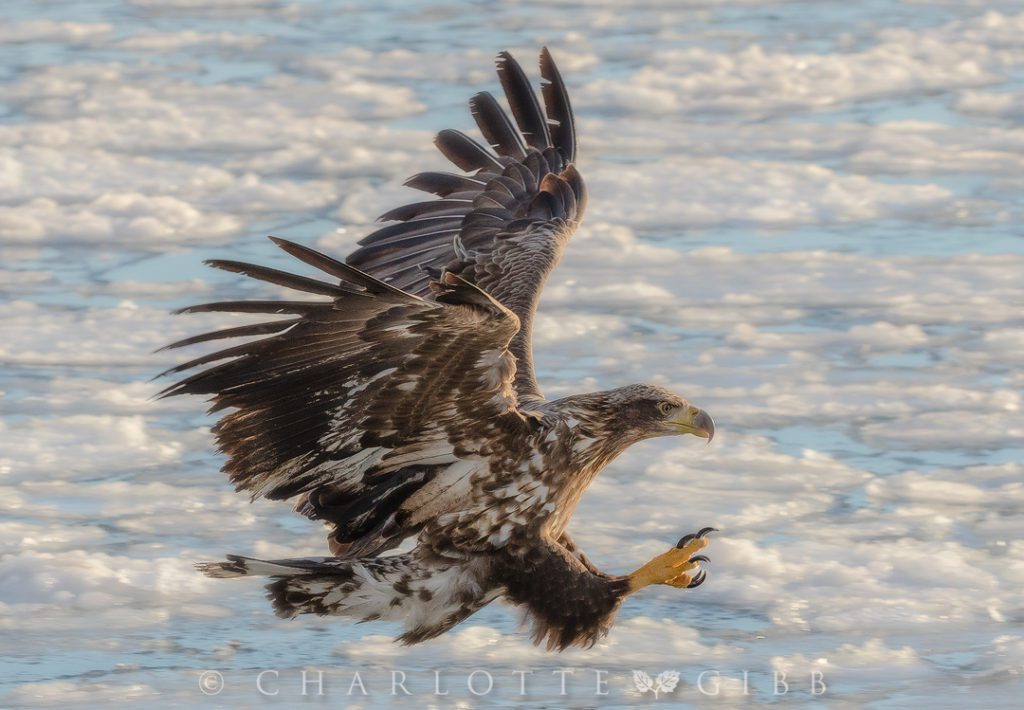

charlottegibb
Charlotte Gibb is a contemporary fine art photographer based in the San Francisco Bay Area specializing in landscapes of the Western United States. Her images are often taken in familiar places for the well-versed landscape photographer, but she prides herself on her keen eye toward the subtle and sometimes overlooked beauty of the natural world. Growing up among the beautiful mountains of Northern California, she considers herself a student of life, learning about people, nature, music, and photography along the way. But always, her life-long passion for the wilderness shines through it all. Charlotte earned her Bachelor of Arts degree from the Academy of Art University in San Francisco and has exhibited her work in several solo shows throughout California. Her darkroom, long gone now, has been replaced with digital darkroom tools, and her style has evolved from a somewhat journalistic approach, to one that pays tribute to the natural world.

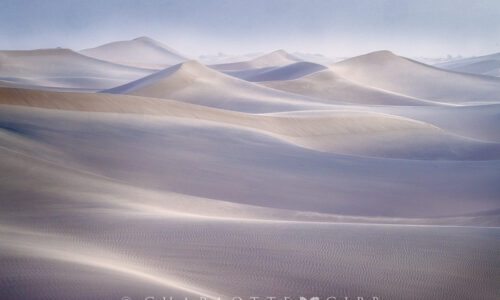
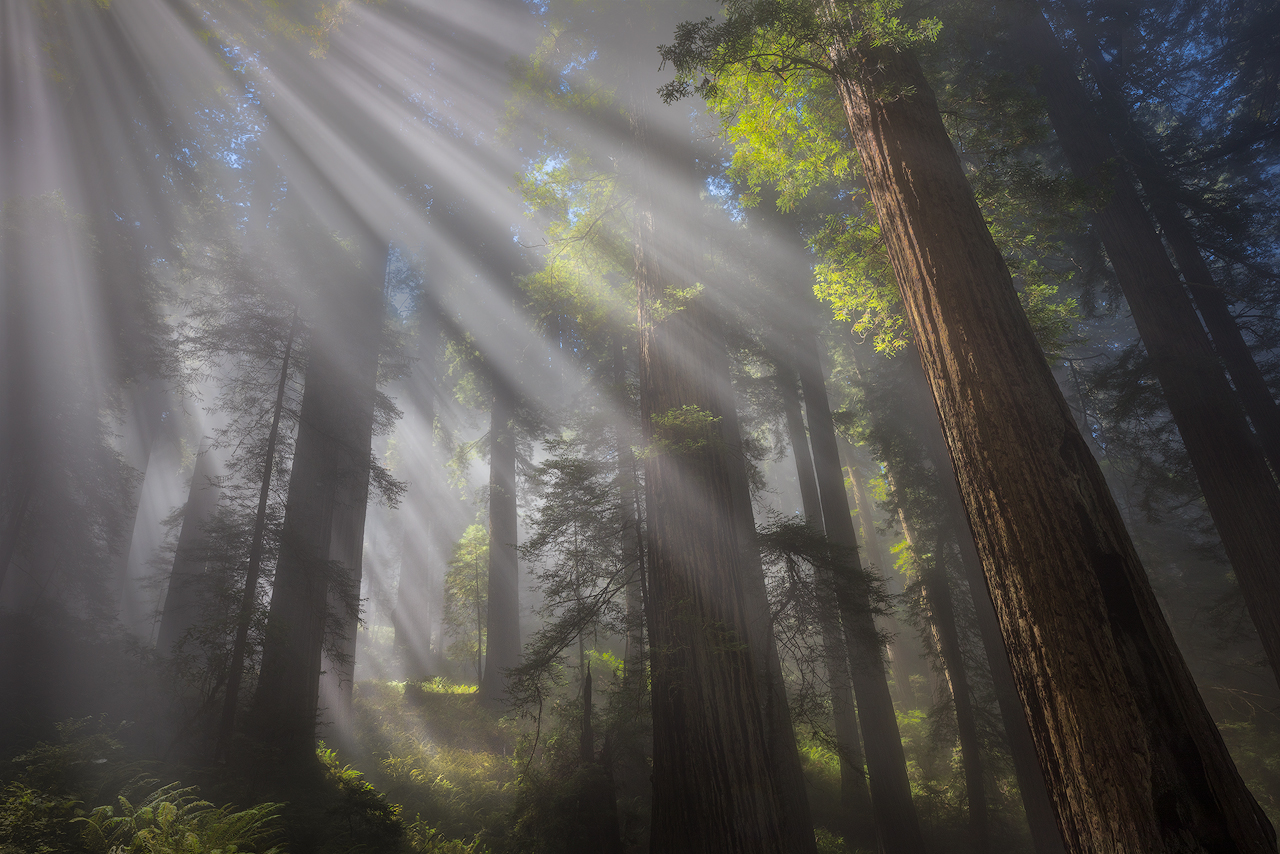
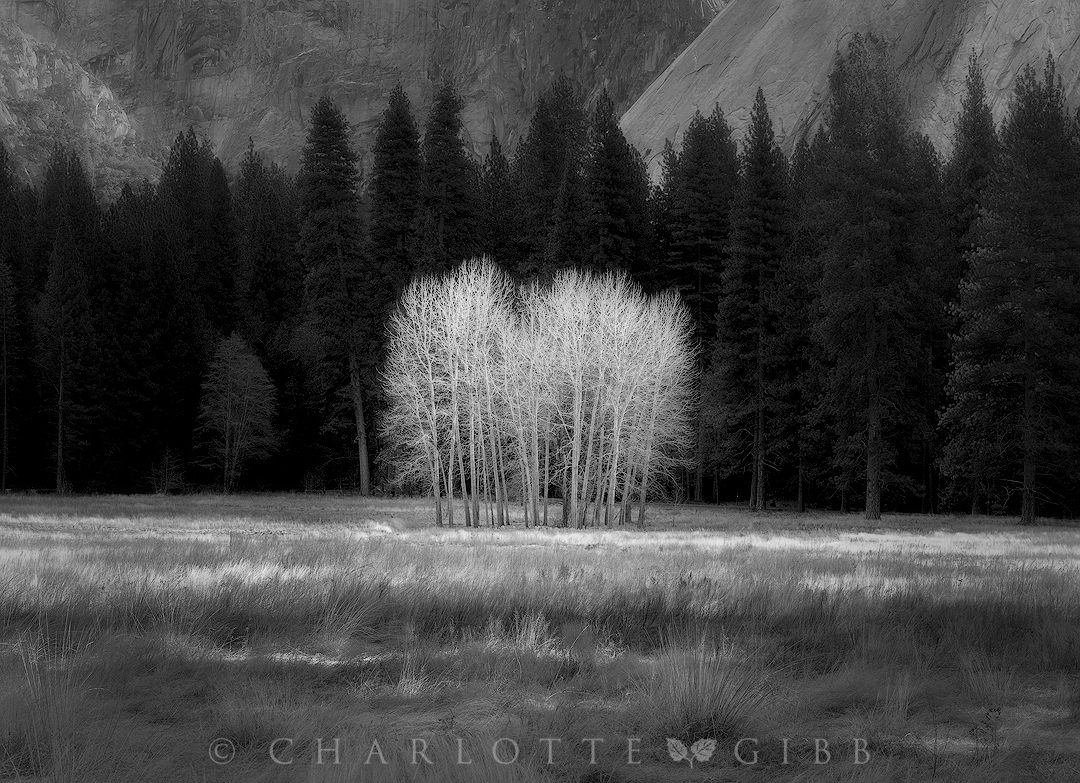
4 Comments
Ace Batacan
As always, great work Charlotte. They look so majestic. My favorite is the last one. I love that the wings spread out but not straight like we normally see. You are blessed having the opportunity to photograph these birds with your talent. Thanks for sharing.
charlottegibb
Thanks, Ace! It was quite the adventure!
Ace Batacan
As always, great work Charlotte. They look so majestic. My favorite is the last one. I love that the wings spread out but not straight like we normally see. You are blessed having the opportunity to photograph these birds with your talent. Thanks for sharing.
charlottegibb
Thanks, Ace! It was quite the adventure!